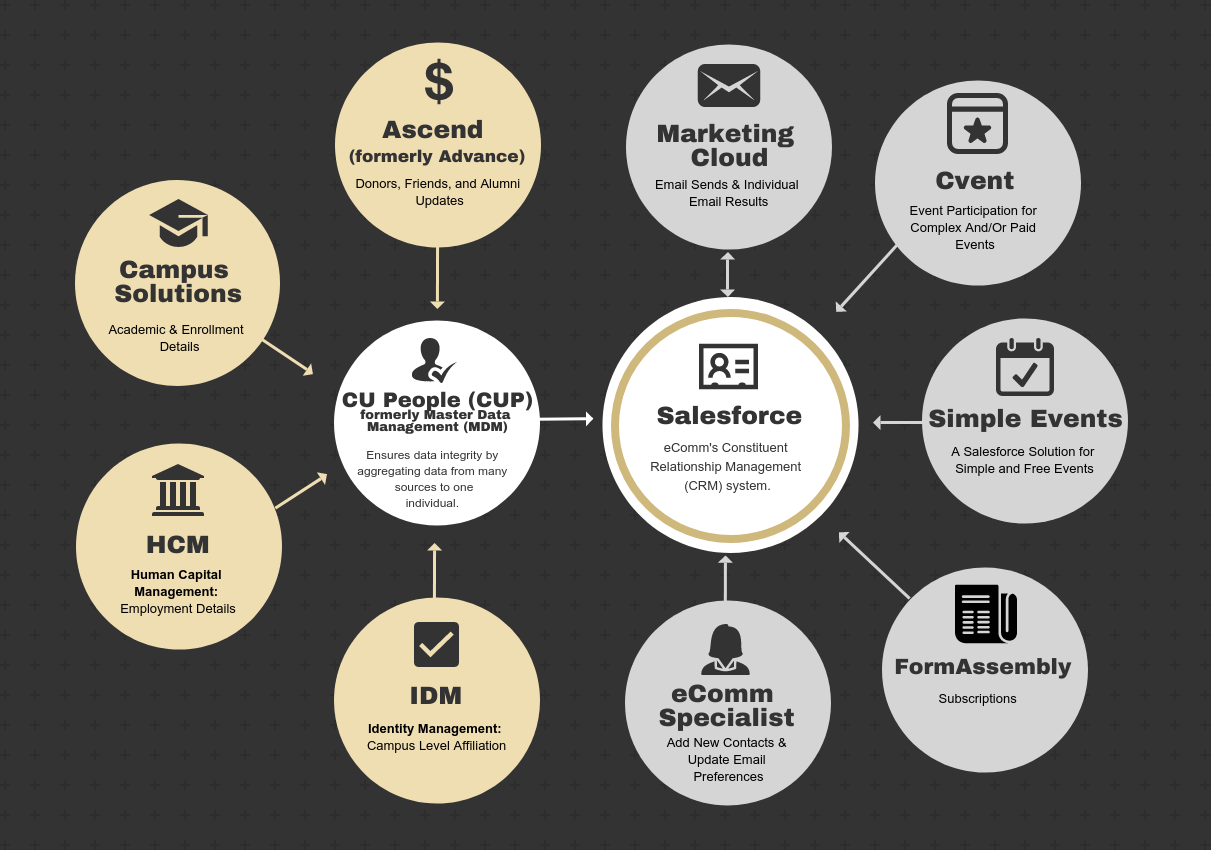Data Model & Tools [1]
Salesforce is at the heart of eComm, but it would be nothing without other systems across CU. Most of eComm's Salesforce Contacts are from a source system (updated nightly) and enhanced with engagement information from eComm's other applications (Marketing Cloud & Cvent), constituents and eComm specialists.

- Advance | Donors, Friends & Alumni Updates
- Campus Solutions | Academic & Enrollment Details
- Human Capital Management (HCM) | CU Employment Details
- Identity Management (IDM) | Campus-level Affiliations
- eComm Specialist | Contacts that do not exist in one of the above data systems can be created directly in Salesforce by an eComm specialist
- Marketing Cloud | Enhances a Contact by layering on individual email preferences and Individual Email Results (IERs).
- Marketing Cloud and Salesforce have a bi-directional integration meaning a Marketing Cloud email can be distributed to a targetted audience created in Salesforce and data from that email is sent back to Salesforce.
- Cvent | Enhances a Contact by adding event participation (and creates new Contacts when necessary). Cvent supports complex and/or paid events.
- Simple Events | Offers a Salesforce solution for collecting registrations at a low cost - only for simple and free events.
- Form Assembly | Enhances a Contact by including any action taken to subscribe (and creates new Contacts when necessary).
- eComm Specialists | Update a constituent's Email Preferences
- Constituents can adjust their Email Preferences by receiving an email and selecting 'Manage My Preferences' in the footer
- Advance, Campus Solutions & HCM | Updates constituent's First Name, Last Name, or Email (depending on which source system the Contact originated from)
Data Dictionary & Entity Relationship Diagram (ERD)
The data dictionary [2] provides full descriptions and values of fields that exist in Salesforce while the Entity Relationship Diagram (ERD) [3] indicates how the data is related to one another.